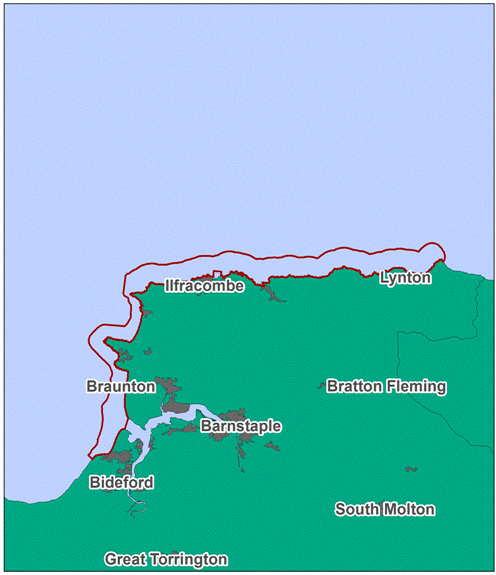
The very recent announcement of DEFRA's Tranche 2 MCZs including the Foreland Point to Westward Ho! coastal strip was very welcome, and Dr Rob Enever of Natural England gave Coastwise members some insight into NE's rigorous approach to assessing backing data to applications, and also the basis of its MCZ management advice.
Rob outlined his background, working on fisheries conservation and with CEFAS, before joining NE. He divulged the startling statistic that c. 60% of all fish caught are discarded, although measures are now in place to avoid this.
On a more optimistic note, after the Tranche 2 announcement, 29% of UK inshore waters are now included in some form of Marine Protected Area, allowing management of the fishing.
The Foreland Point to Westward Ho! MCZ (Diagram R) was designated because it has 20 conservationally-important "features" including pink sea fans, spiny lobsters and sabellaria worms as well as desirable biotopes (environments) such as DEFRA's designated "high-energy sub-littoral rock".
In Cornwall, the stretch from Hartland Point to Tintagel was also included, but omitted is the Devon section from Westward Ho! to Hartland, which is known to contain a rich variety of biological and environmental features. The reason was the comparative lack of hard data, and this is an area to work on prior to Tranche 3.
Another omitted, but deserving site, is the area referred to as "Proposed Area North Of Lundy" – actually the Morte Platfrom just NW of Morte Point (Diagram R). This contained relevent features, and was also agreed by local fishermen, but the reason for omission is not known.
Rob outlined the way in which NE is improving the service it offers on conservation advice, quality of data, and rationalisation of evidence standards for scientific data. NE is shortly releasing a website which provides a large amount of conservation management guidance and data – this will be www.magic.gov.uk, and will be available in March 2016.

